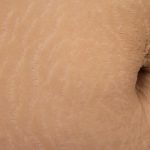How to Get Rid of Stretchmarks
The majority of women (and some men) all over the world, suffer with the issue of ‘stretch marks’. Stretch marks are small discoloured lines which form on the surface of the skin. They are commonly found around the abdominal area, thighs, upper arms, breasts and buttocks. Some stretch marks appear as purple, pink or even white. Stretch marks can be caused by a number of different reasons these include; weight loss or gain, rapid growth during puberty, stress, changes in the body, pregnancy and can even occur because of heredity factors.
Stretch marks appear like little scars and over 80% of women have them. They can make you feel self-conscious and can affect your daily life and can even affect what you choose to wear.
The issue with stretch marks is that they are almost impossible to get rid of. If you can catch them when they are new, certain creams can help for example, Shea butter or Coconut oil however there is no guarantee. Some people opt for a medical treatment of topical Tretinoin, this may not be safe to use if you have stretch marks whilst pregnant or breast feeding. This prescribed treatment also is not guaranteed to help reduce the stretch marks.
Unfortun ately, there has been research to show that creams hardly change the appearance of stretch marks. However, don’t lose faith just yet. The Nuriss Clinic, have developed the “Nuriss Stretchmark Fadeaway treatment which combines micro-needling treatments with Radiofrequency and Ultrasonic treatments” says our Dr Anita, she also says that; “The Nuriss Stretchmark Fadeaway uses sophisticated technology – an advanced form of micro-needling, which works deep within the skin layers, encouraging skin rejuvenation and healthier skin formation”.
ately, there has been research to show that creams hardly change the appearance of stretch marks. However, don’t lose faith just yet. The Nuriss Clinic, have developed the “Nuriss Stretchmark Fadeaway treatment which combines micro-needling treatments with Radiofrequency and Ultrasonic treatments” says our Dr Anita, she also says that; “The Nuriss Stretchmark Fadeaway uses sophisticated technology – an advanced form of micro-needling, which works deep within the skin layers, encouraging skin rejuvenation and healthier skin formation”.
This innovative  treatment results in healthier looking skin which diminishes the appearance of stretch marks. It usually works better on stretch marks which appear more prominent looking.
treatment results in healthier looking skin which diminishes the appearance of stretch marks. It usually works better on stretch marks which appear more prominent looking.
If however, you cannot beat the stretch marks, then learning to live with them is usually the harder but more effective way. It can be tough, but remind yourself that the majority of women (and men) have them and knowing that you are not alone in this can be comforting.



